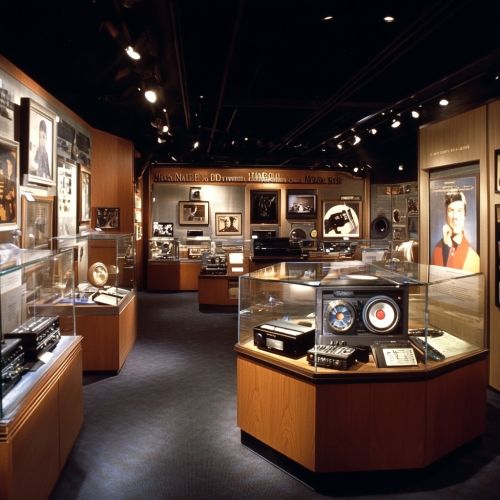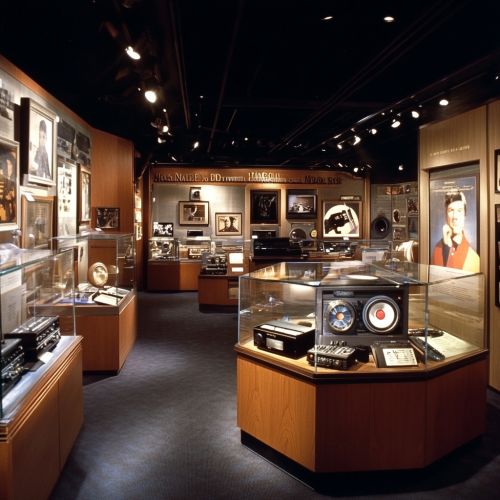National Radio Hall of Fame
History
The National Radio Hall of Fame (NRHOF) was established in 1988 to recognize and honor outstanding achievements in the field of radio broadcasting. The Hall of Fame is located in Chicago, Illinois, and is part of the Museum of Broadcast Communications. The NRHOF aims to celebrate the contributions of individuals and programs that have had a significant impact on the development and evolution of radio as a medium of communication.
The inception of the NRHOF was driven by the need to acknowledge the pivotal role that radio has played in shaping public discourse, entertainment, and information dissemination. The inaugural induction ceremony took place in 1988, and since then, the Hall of Fame has continued to induct new members annually, celebrating a diverse range of talents and contributions across various genres and formats.
Induction Process
The induction process for the National Radio Hall of Fame involves a rigorous selection procedure. Nominees are typically chosen based on their significant contributions to the radio industry, including their influence, innovation, and longevity in the field. The selection committee comprises industry professionals, historians, and previous inductees who evaluate the nominees' impact on the medium.
The nomination categories include:
- **Pioneers**: Individuals who have made groundbreaking contributions to the early development of radio.
- **On-Air Personalities**: Hosts and announcers who have achieved national recognition.
- **Programs**: Radio shows that have had a substantial cultural or societal impact.
- **Off-Air Contributors**: Producers, directors, writers, and other behind-the-scenes personnel who have significantly influenced radio broadcasting.
Notable Inductees
The National Radio Hall of Fame has inducted numerous influential figures since its establishment. Some notable inductees include:
- **Edward R. Murrow**: Renowned for his pioneering work in broadcast journalism, particularly during World War II.
- **Orson Welles**: Famous for his "War of the Worlds" broadcast, which demonstrated the power of radio as a medium.
- **Paul Harvey**: Known for his distinctive voice and storytelling style in his "The Rest of the Story" segments.
- **Howard Stern**: A controversial yet influential figure in modern radio, known for his candid and often provocative broadcasting style.
Impact on Radio Industry
The National Radio Hall of Fame has played a crucial role in preserving the legacy of radio broadcasting. By recognizing the achievements of individuals and programs, the NRHOF helps to maintain the historical significance of radio and its evolution over the decades. The Hall of Fame serves as an educational resource, providing insights into the development of radio technology, programming, and its societal impact.
Moreover, the NRHOF fosters a sense of community and pride among radio professionals. It encourages excellence and innovation within the industry by highlighting exemplary contributions. The annual induction ceremonies also provide a platform for networking and collaboration among industry veterans and newcomers alike.
Exhibits and Collections
The National Radio Hall of Fame features a variety of exhibits and collections that showcase the rich history of radio broadcasting. These exhibits include:
- **Historical Artifacts**: Microphones, scripts, and other memorabilia from iconic radio broadcasts.
- **Audio Archives**: Recordings of significant radio programs and broadcasts, providing aural history for visitors.
- **Interactive Displays**: Hands-on exhibits that allow visitors to experience the evolution of radio technology and programming.


The exhibits are designed to educate visitors about the technological advancements and cultural shifts that have shaped radio over the years. They also highlight the personal stories and achievements of the inductees, offering a comprehensive view of their contributions to the medium.
Educational Programs
The National Radio Hall of Fame is committed to education and outreach. It offers a range of programs aimed at students, educators, and the general public. These programs include:
- **Workshops and Seminars**: Educational sessions on radio production, journalism, and broadcasting techniques.
- **School Tours**: Guided tours for students, providing an immersive learning experience about the history and impact of radio.
- **Public Lectures**: Talks and presentations by industry experts and Hall of Fame inductees, discussing various aspects of radio broadcasting.
These educational initiatives help to inspire the next generation of radio professionals and enthusiasts. They also promote a deeper understanding of the medium's role in society and its ongoing evolution.
Future Directions
The National Radio Hall of Fame continues to evolve in response to changes in the radio industry. As digital and internet radio gain prominence, the NRHOF is expanding its scope to include these new forms of broadcasting. This includes recognizing achievements in podcasting, streaming, and other digital audio formats.
The Hall of Fame is also exploring ways to enhance its exhibits and collections through digital technology. Virtual tours, online archives, and interactive digital exhibits are being developed to reach a broader audience and provide greater access to its resources.
